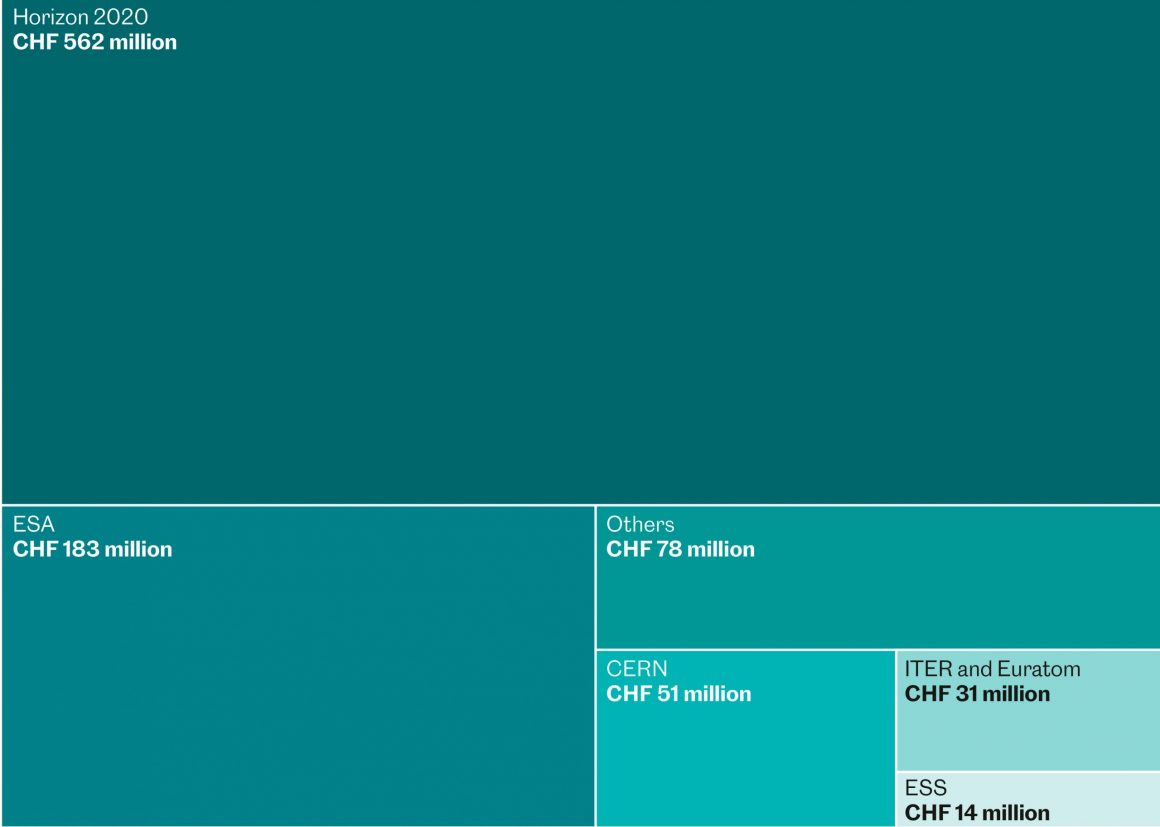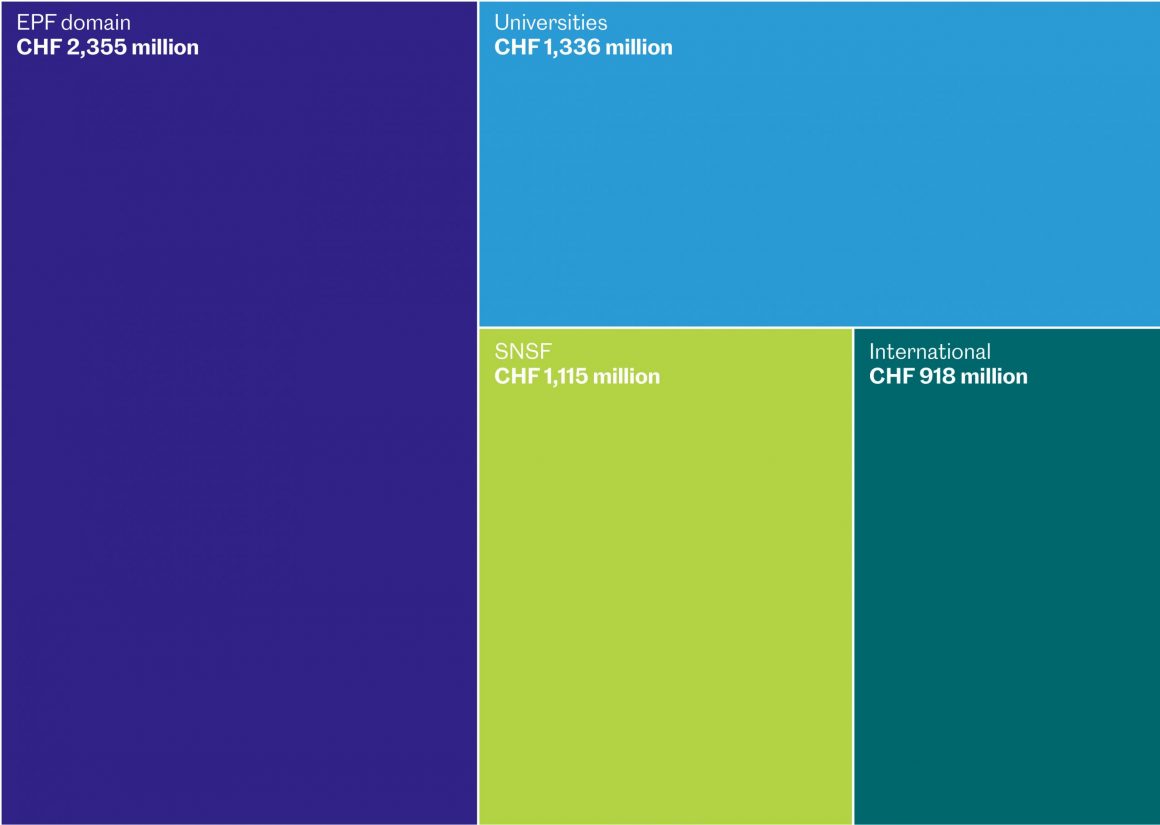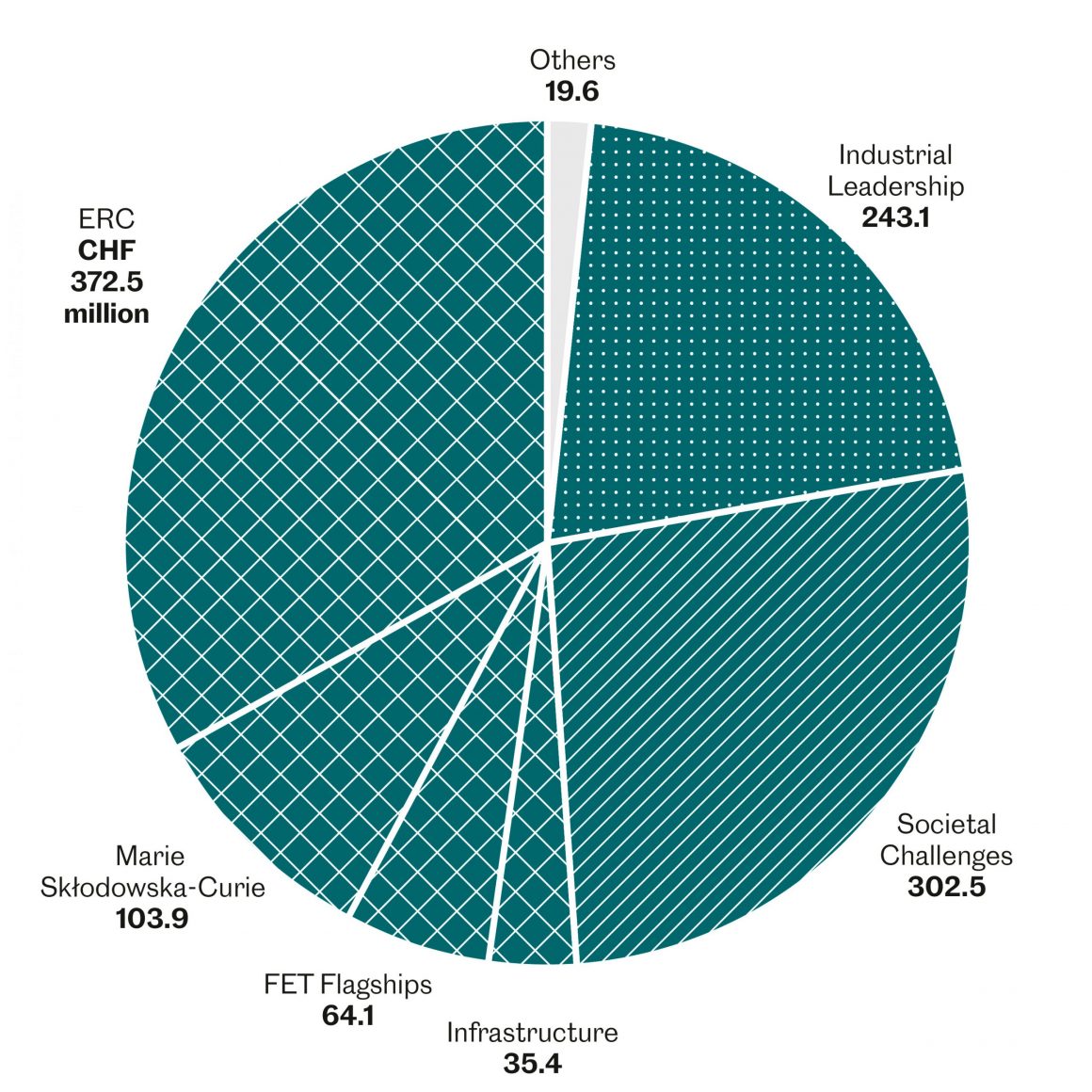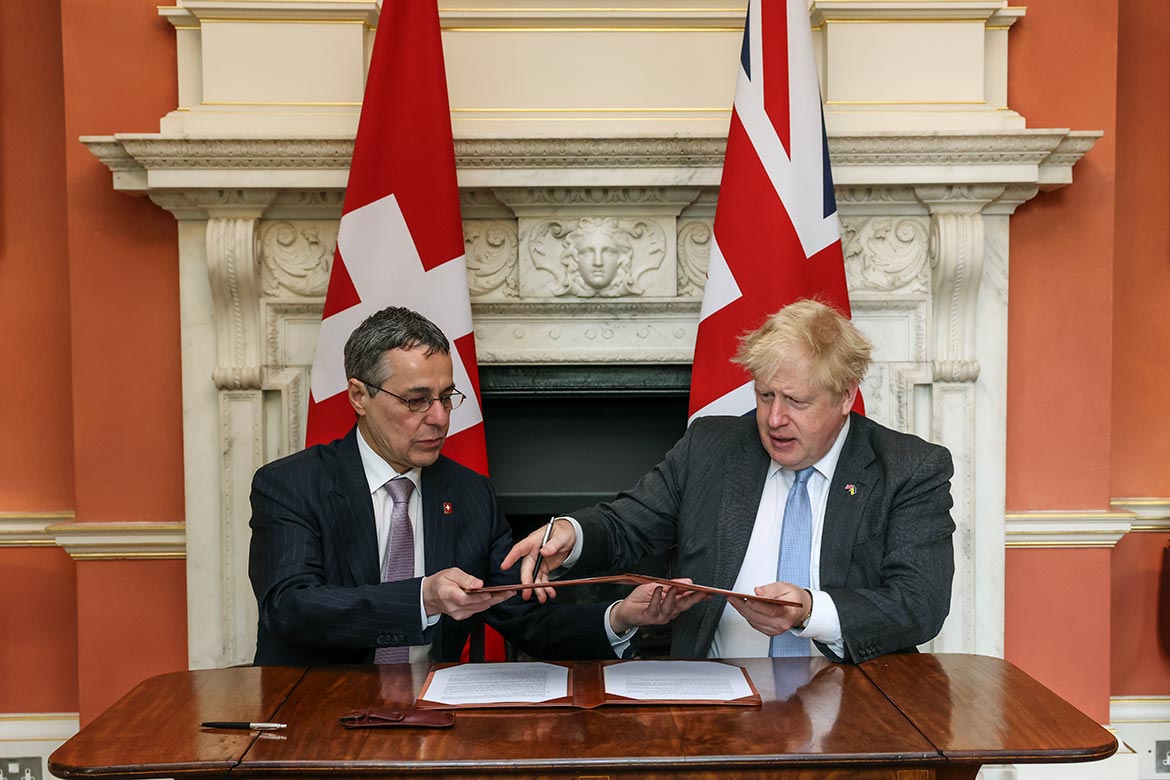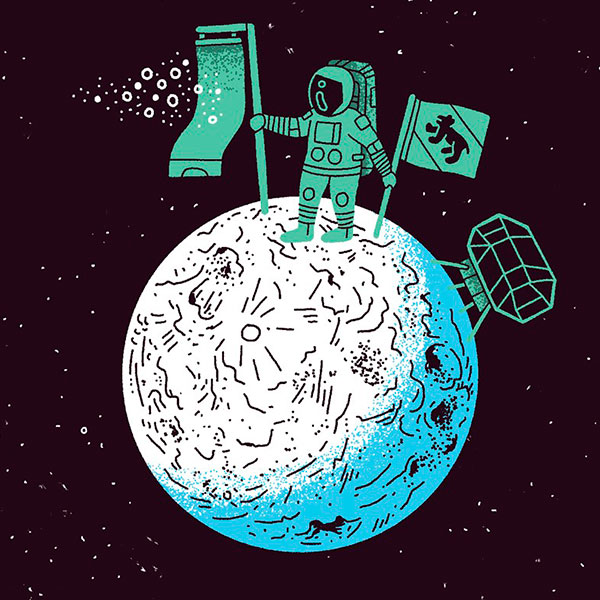Horizon Europe
What Switzerland stands to lose
Collaboration between Switzerland and Europe is in a severe crisis. We look at what this means for Swiss research, and consider what might be done about it.
Science aims to expand our horizons. So it’s apt that the EU’s research framework programmes – previously only so designated – were in 2014 given a proper name: ‘Horizons 2020’. These programmes are coming to an end this year, and they already have a similarly sounding successor lined up: ‘Horizon Europe’. These new framework programmes will run from 2021 to 2027 and will have a record budget of almost EUR 100 billion. In the year 2020, the Swiss federal government paid out more than CHF 560 million for Horizon 2020. That amounts to some 60 percent of its investments in international research (see graphic 1). The government intends to spend CHF 5.4 billion on the whole Horizon Europe package.
But since the Federal Council broke off negotiations with the EU on a framework treaty in May 2021, it has been unclear, whether or not Switzerland will be able to participate in Horizon Europe – nor if so, how. In July, the European Commission relegated Switzerland to the status of “a non-associated third country for the submission of project proposals in Horizon Europe”. This also applied to the nuclear research programme Euratom and the international nuclear fusion project ITER. The federal government’s goal remains full association, as was the case with Horizon 2020 from 2017 onwards. But the current uncertainty remains (as of 11.08.2021).
1. Most funding goes to Horizon 2020
Federal expenditure in 2020 for international research programmes and infrastructures:
Source: State Account 2B 2020, Federal Finance Administration, p.255. Swiss Participation in European Research Framework (SEFRI, 2019), Table 11
2. Almost 1 billion for international research
Main federal research expenditure in 2020
Source: State Account 2B 2020, Federal Finance Administration, p.255. Swiss Participation in European Research Framework (SEFRI, 2019), Table 11
The European research framework programmes are not just co-financed by Switzerland, but also provide essential research support here. Thus from 2014 and 2018, some CHF 1.1 billion flowed from Horizon 2020 to Swiss institutions, of which roughly half went to basic research in the form of ERC grants or financial assistance for Future Emerging Technologies (FET) flagships (see graphic 3).
According to Martin Fischer, head of communication at the State Secretariat for Education, Research and Innovation (SERI), “These research framework programmes are the second largest source of public monies for researchers in Switzerland after the SNSF, and are the most important for researchers in the private sector, SMEs and large corporations”.
3. Basic research gets half
Grants to Swiss institutions (2014-2018)
Source:State Account 2B 2020, Federal Finance Administration, p.255. Swiss Participation in European Research Framework (SEFRI, 2019), Table 11
Thanks to Horizon 2020, Switzerland has become highly interlinked with Europe (see graphic 4). Since May this year, there has been much speculation about what the consequences could be for Swiss research, and how they would be mitigated. Some people have reacted with apprehension, while others have taken a more sober view. The SERI issued a calming statement in June, assuring everyone that Switzerland would soon be once more eligible for full association.
And after the European Commission relegated Switzerland to third-party status in July, the SERI continued to reassure researchers in Switzerland that they would still be able to take part in Horizon Europe and its related programmes and initiatives, and would be able to submit proposals. Any monies given would then be paid by the SERI itself, and this would also apply to ERC grants.
4. Switzerland at the heart of Horizon 2020
Main structure of the network for European collaboration
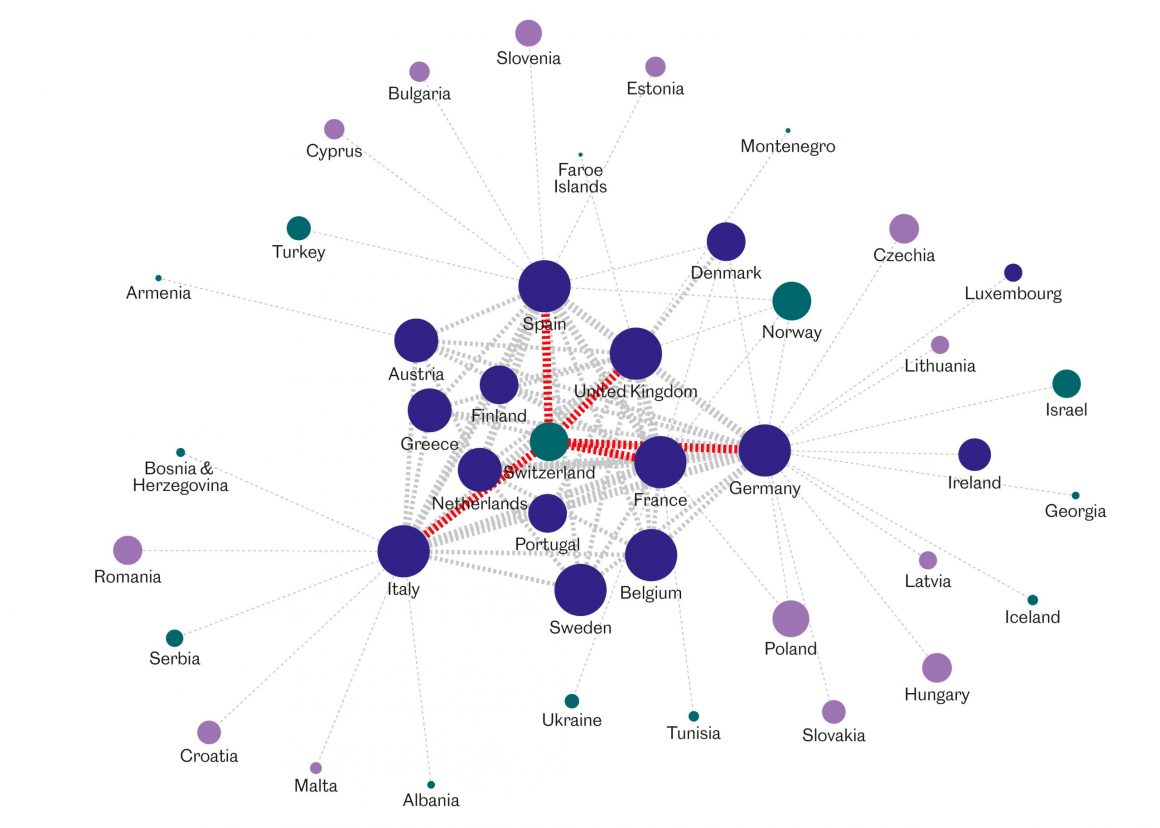
This graph represents a fraction of the connections within Horizon 2020. The lines are proportional to the number of projects shared between the two countries connected.
It’s a case of déjà-vu. When the Mass Immigration Initiative was accepted at a referendum in 2014, Switzerland was temporarily excluded from Horizon 2020, even though it had been fully associated since 2004 and had played a major role in establishing the reputation of the programme. The federal government reacted by tasking the SNSF with organising so-called temporary ERC replacement measures. These offered researchers at Swiss institutions a time-limited replacement for the support programmes of the ERC. Back then, the SNSF awarded a total of 27 ‘Starting Grants’ of its own, and 21 ‘Consolidator Grants’. The total budget involved was some CHF 90 million. According to the SNSF, the statistics for participation and the success quotient were similar to those for ERC grants.
For answers, please look to the sky
Today the Head of Institutional Relations at the SNSF is Jean-Luc Barras, who back then was involved in implementing these replacement measures. He emphasises: “it was always clear to the SNSF that this was only a temporary, emergency solution, because competing on a national level cannot replace competing on a European level”. In order to analyse the impact of these temporary replacement measures, a survey is currently being conducted of the recipients of the money.
These temporary funds in 2014 were only able to extinguish the initial fire, as it were, though similar measures could still help again now, says Barras. However, it would only work for an interim period: “If Switzerland cannot become fully associated with Horizon Europe in the medium term, more appropriate measures might have to be taken, such as adapting the funding programmes of the SNSF”. In August, the SERI announced that it would directly finance all successfully evaluated applications for ERC grants for 2021, as well as all Accelerator grants of the European Innovation Council (EIC). It also announced that it is working on appropriate measures for the Horizon Europe programmes that are no longer accessible to researchers from Switzerland.
Just as back in 2014, the ERC has decided that its Starting Grants and Consolidator Grants cannot be transferred to Switzerland. In other words, Grant recipients lose their research funding if they are appointed to a Swiss institution. This applies unequivocally in 2021, and will probably also apply in 2022. The SERI is currently funding them instead. These transfer grants are extremely important for Switzerland’s role in the research community, because it imports and exports more researchers than almost any other country (see graphic 5).
5. Swiss science is extremely international
International migration of doctoral graduates
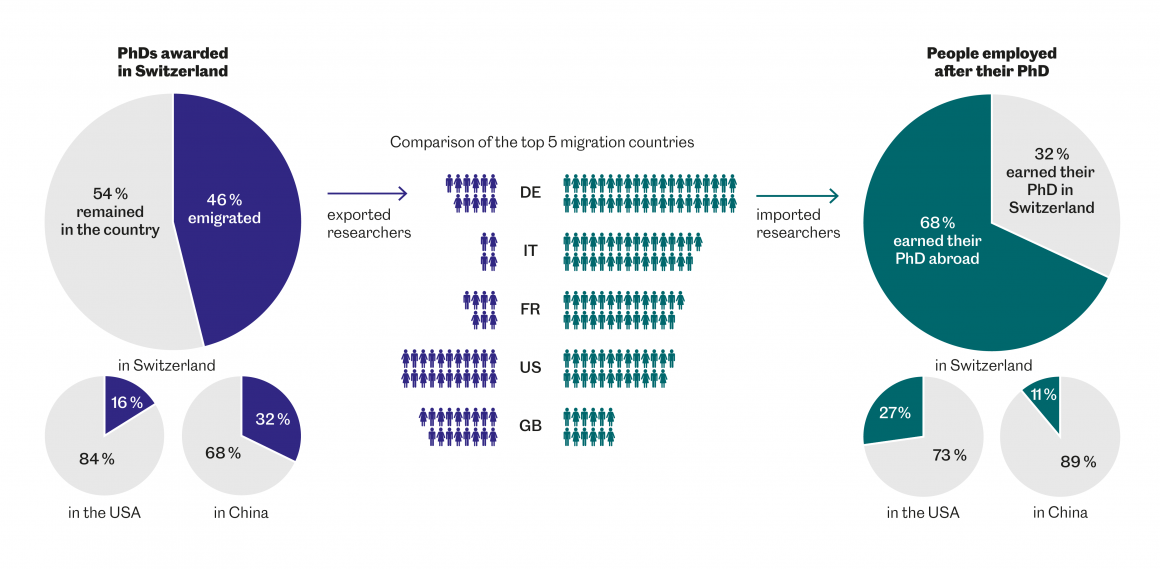
Analysis by Yingqiang Gao (ETH Zurich) for Horizons, based on data from Charles Gomez (City University of New York) in his article ‘Moving more, but closer: Mapping the growing regionalization of global scientific mobility using ORCID’, doi: 10.1016/j.joi.2020.101044
Former Federal Councillor Johann Schneider-Ammann told Horizons two years ago that his biggest success in the field of science policy was “undoubtedly” Switzerland’s full association with Horizon 2020. Could his success back then be repeated today? The journalist François Schaller is a blogger at Le Temps who has been observing the relationship between Switzerland and the EU for a long time now. He recently issued the following prediction: “It’s more than likely that Switzerland will get the status of an associated third country, albeit with a certain delay”. As with Horizon 2020, this status has already been granted to more than 15 countries on the periphery of the EU, including the United Kingdom and Israel.
But Schaller also sounds a note of caution: “This association won’t be as comprehensive as the last time”. Together with its Mediterranean neighbours and EU members in Eastern Europe, France has managed to ensure that certain restrictions will be applied. Generally speaking, there is only a faint ray of light on the horizon. (Up-to-date information for researchers is available as of the beginning of September 2021 at: https://www.snf.ch/european-policy).
Infographics: Daniel Saraga, Bodara

